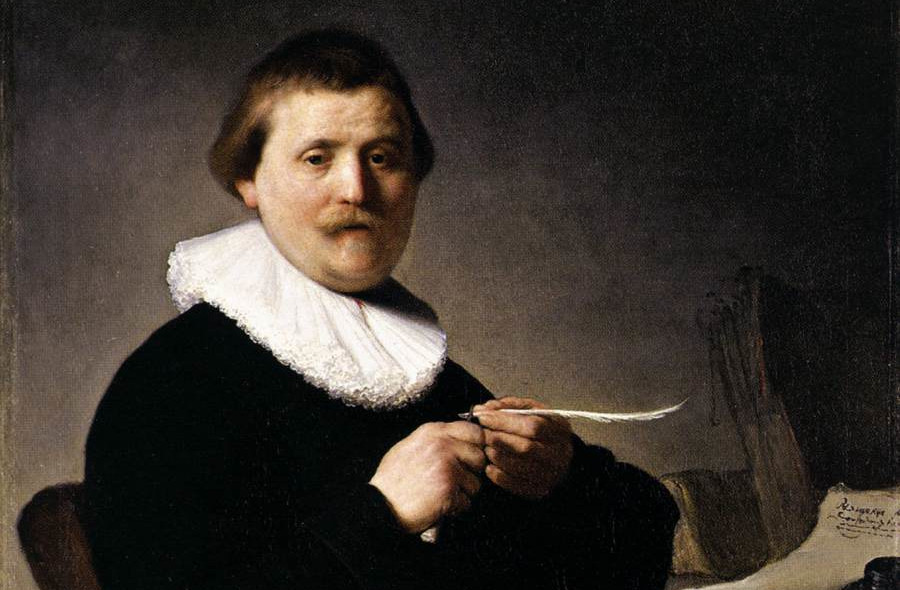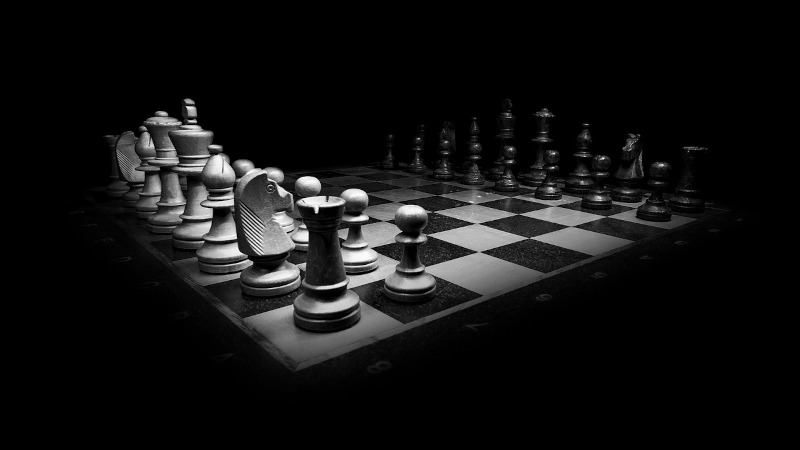
A puzzle by Polish mathematician Paul Vaderlind:
Is it possible to arrange 25 whole numbers (not necessarily all different) so that the sum of any three successive terms is even but the sum of all 25 is odd?

A puzzle by Polish mathematician Paul Vaderlind:
Is it possible to arrange 25 whole numbers (not necessarily all different) so that the sum of any three successive terms is even but the sum of all 25 is odd?
Vladimir Nabokov’s 1962 novel Pale Fire includes a character named John Shade, a poet who writes the lines
Space is a swarming in the eyes; and time,
A singing in the ears.
In the first edition of his 1964 book The Ambidextrous Universe, Martin Gardner quoted these lines and, as a joke, credited them to Shade rather than Nabokov, listing Shade in the index.
Nabokov, in turn, in his 1969 novel Ada or Ardor: A Family Chronicle had a character quote Gardner’s book and the same two lines of verse:
‘Space is a swarming in the eyes, and Time a singing in the ears,” says John Shade, a modern poet, as quoted by an invented philosopher (‘Martin Gardiner’) in The Ambidextrous Universe, page 165.
Gardner’s book concerns symmetry, and Ada is a palindrome; further, the action in that novel takes place on Anti-Terra, a sort of mirror image of Earth. Nabokov’s 1974 novel Look at the Harlequins!, also influenced by Gardner’s book, concerns a man who can’t distinguish left from right.
(Thanks, Jeff.)

A great portrait is always more a portrait of the painter than of the painted. When we look at a portrait by Holbein or Rembrandt it is of Holbein or Rembrandt that we think more than of the subject of their picture. Even a portrait of Shakespeare by Holbein or Rembrandt could tell us very little about Shakespeare. It would, however, tell us a great deal about Holbein or Rembrandt.
— Samuel Butler, Notebooks, 1912
A little kingdom contains 66 people, a king and 65 citizens. Each of them, including the king, has a salary of one gold piece. When democracy comes, the king is denied a vote, but he has the power to suggest changes, in particular regarding the redistribution of salaries. The salaries must total 66, and each salary must be a whole number of gold pieces. The citizens will vote on each suggestion, which will pass if more citizens vote for it than against it. Each voter will reliably support a measure if it will increase his salary, oppose it if it will decrease his salary, and otherwise abstain from voting.
The king is greedy. What’s the highest salary he can arrange for himself?

Now this last example is very interesting. What happened when Christ broke the bread at the Last Supper? He broke a thing into fragments. But each piece contained the whole: that is, his entire body. And, again, what happens if the Host, after it has been consecrated by a priest, falls to the floor of the church and crumbles, and if a mouse then eats the crumbs? Does the mouse eat Christ’s body? I do not wish to develop this argument, merely to remind you that this was one of the arguments used by Protestant reformers to ridicule Catholic practice.
— Jacqueline Lichtenstein, “The Fragment: Elements of a Definition,” in William Tronzo, ed., The Fragment: An Incomplete History, 2009
One night in 1939, Wolcott Gibbs’ 4-year-old son Tony began chanting a song in the bathtub. It was sung “entirely on one note except that the voice drops on the last word in every line”:
He will just do nothing at all.
He will just sit there in the noonday sun.
And when they speak to him, he will not answer them,
Because he does not care to.
He will stick them with spears and throw them in the garbage.
When they tell him to eat his dinner, he will just laugh at them.
And he will not take his nap, because he does not care to.
He will not talk to them, he will not say nothing.
He will just sit there in the noonday sun.
He will go away and play with the Panda.
He will not speak to nobody because he doesn’t have to.
And when they come to look for him they will not find him.
Because he will not be there.
He will put spikes in their eyes and put them in the garbage.
And put the cover on.
He will not go out in the fresh air or eat his vegetables.
Or make wee-wee for them, and he will get thin as a marble.
He will do nothing at all.
He will just sit there in the noonday sun.
Pete Seeger liked this so much that he made a song of it — he called it “Declaration of Independence”:

Here’s a unit square. Prove that, if nine points are identified in the square’s interior, we can always find three of them that form a triangle of area 1/8 or less.

Hong Kong contains a street named Rednaxela Terrace. It’s hard not to notice that this is Alexander spelled backward, but the origin of the name is uncertain.
In Signs of a Colonial Era (2009), Andrew Yanne and Gillis Heller claim that the street had been named Alexander Terrace after its original owner but that a clerk recorded the name backward, as the Chinese language was written right to left at the time.
Another possibility is that the name is linked to New York abolitionist Robert Alexander Young’s 1829 pamphlet Ethiopian Manifesto, which contains the name Rednaxela.

In writing novels as well as plays the cardinal rule is to treat the various characters as if they were chessmen, and not try to win the game by altering the rules; for instance, not move the knight as if it were a pawn, and so on. Again the characters ought to be strictly defined, and not put out of action in order to help the author to accomplish his purpose; for, on the contrary, it is through their activity alone he should try to win. Not to do this is to appeal to the miraculous, which is always unnatural.